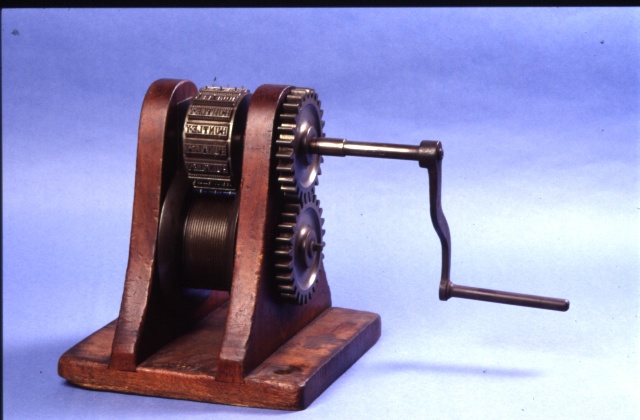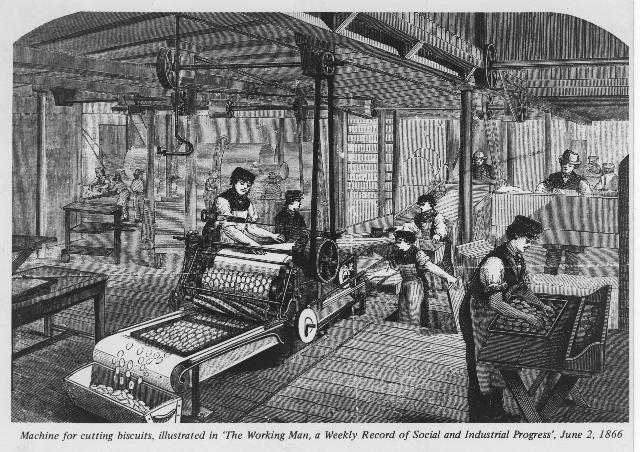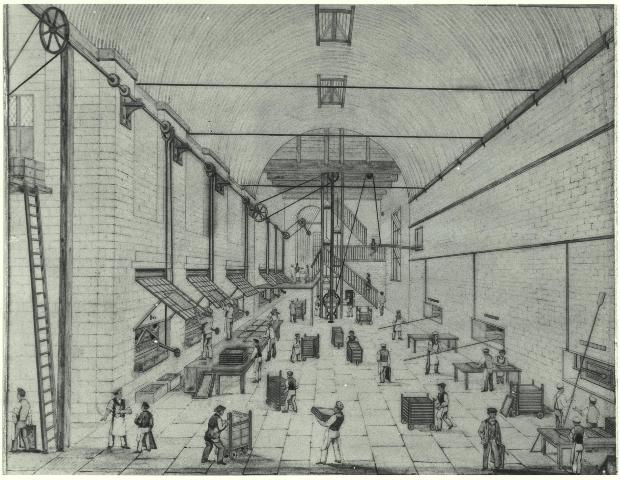In 1841 there were only two pieces of machinery in use in the bakery. Over the next 30 years George Palmer, with the help of William Exall - the local ironfounder, mechanised the process of biscuit making to such an extent that visitors came from all over the world to admire and gather information on biscuit manufacture.
The first machine
This machine, used to stamp the name of the manufacturer on the biscuit, was the first piece of machinery employed by the company. It predated George Palmer's arrival so the only name stamped on the biscuit dough was Huntley. Despite the development of more sophisticated machinery, this hand-operated machine was still used to make Jamaica biscuits until 1939.

This stamper was mentioned in the Berkshire Chronicle's account of the visit of the Japanese delegation led by Ambassador Sionii Twakura to Reading on 25 November 1872. The article mentions George Palmer showing the visitors the device.(REDMG : 1997.19.1)
Mechanical biscuit cutters
The move to the new factory led to the rapid development of machine manufacture. In 1832 steam-powered machinery had been invented to produce low-quality biscuits for ships and George Palmer was quick to introduce steam-powered biscuit cutters which looked something like a newspaper printing press. Instead of newspapers the machines stamped biscuits out of flattened dough, at a rate of about 500 minute.

This illustration of a machine for cutting biscuits appeared in The Working Man, a weekly record of social and industrial progress, in 1866. (REDMG : 1997.130.181)
The cut biscuits fell onto trays which one boy, standing in a hole below floor-level to save him stooping continuously, supplied to the moving band. Another team of boys collected the trays as they reached the end of the band, stacked them twelve deep on specially made trolleys, and wheeled them off to the ovens.
The ovens
The ovens were walled-in hot chambers. On one side were endlessly revolving lattice bands on which trays of unbaked biscuits were carried into the ovens. These moved slowly through the oven and came out of the other side with the biscuits baked. Despite problems with the machinery, including the explosion of one of the ovens on its first use, production increased by 500% in the first five years.

Huntley & Palmers manufacturing department with draw plate ovens (REDMG : 1997.130.115)
When baked, the trays of biscuits were taken by a lift, called by the nautical name of Jacobs ladder, to the second storey of the factory where boys sorted through them and removed the damaged or overcooked biscuits, then packed them into tins.
In the next section, learn about the expansion of the factory.





